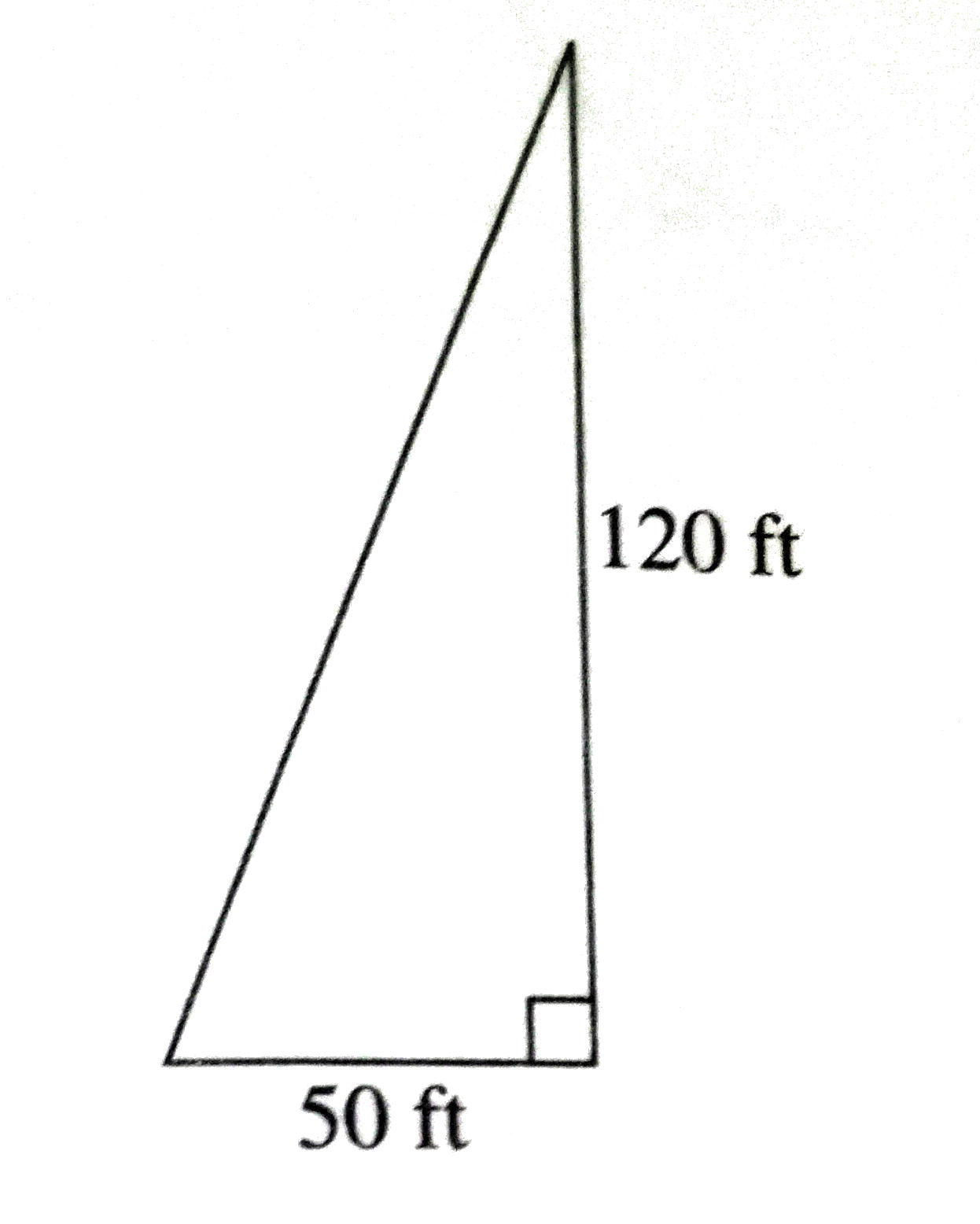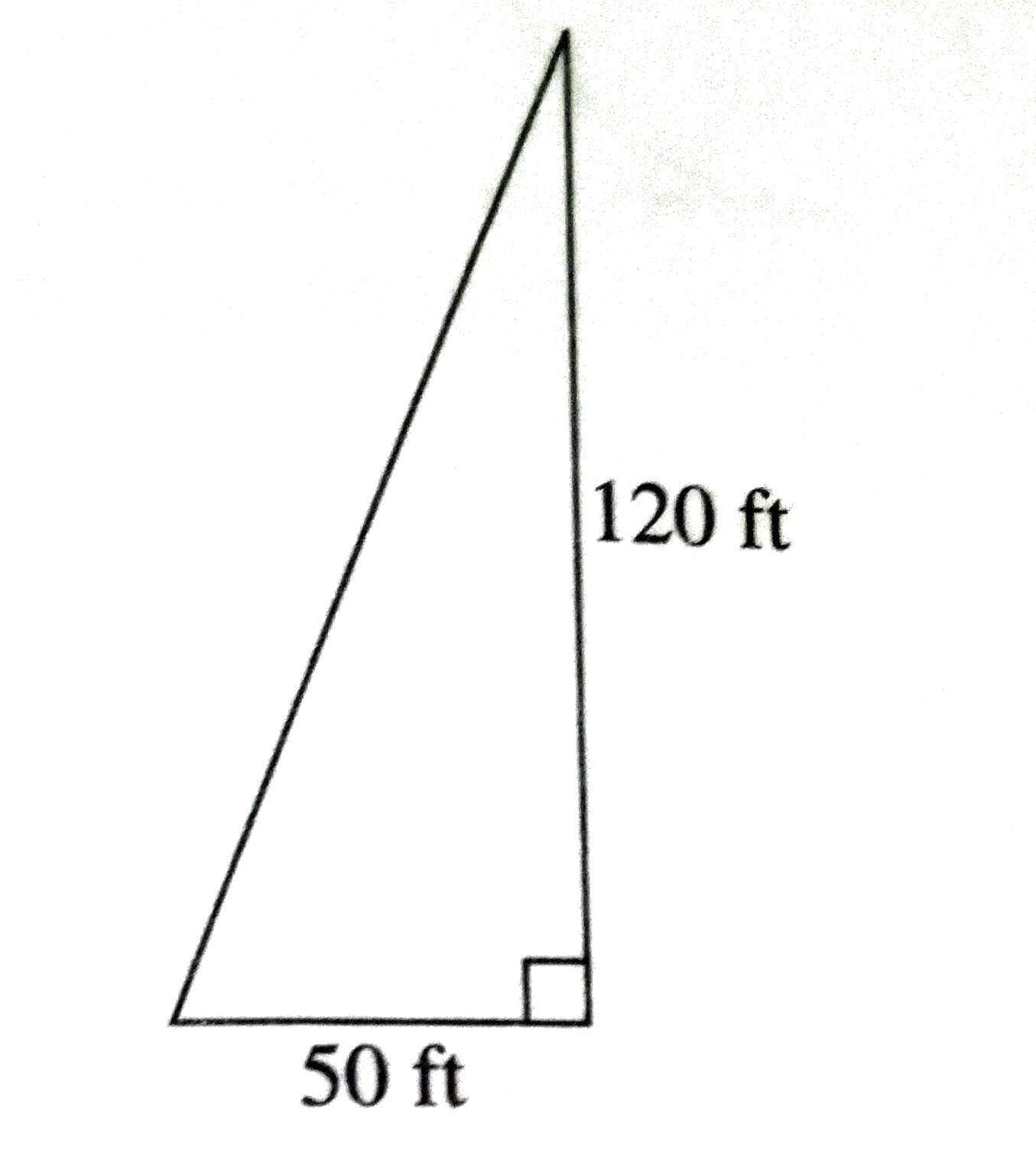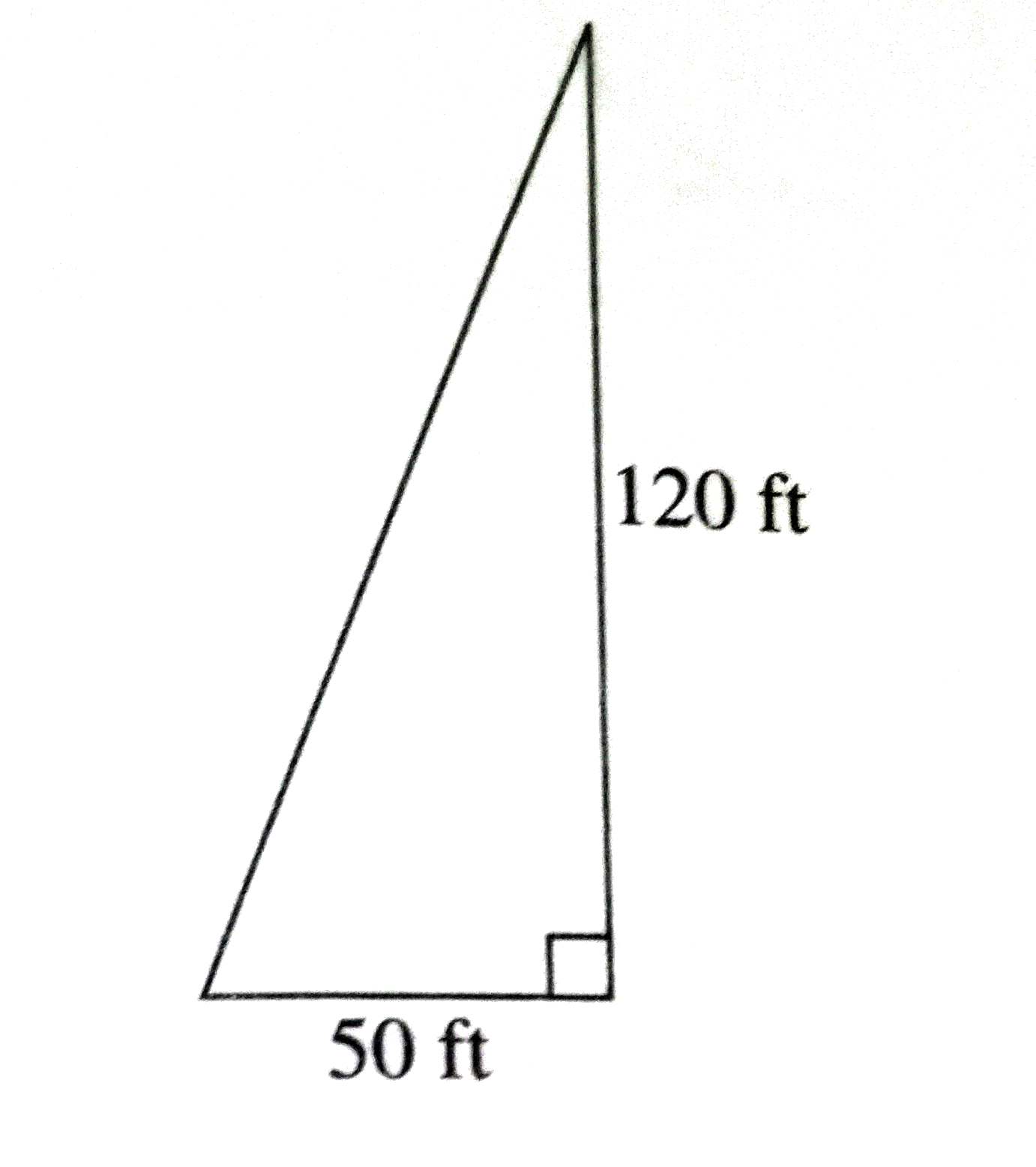Greg is making a triangular sail for a boat , shaped like a right triangle and shown below .

To determine how much trim to buy for the sail, Greg calculated the sail,s perimeter . What is the sail's perimeter, in feet ?
300
290
275
220
The correct Answer is:A
Topper's Solved these Questions
Similar Questions
You have given three different tasks to three groups in your classroom
Group 1: Compare the given figures and find out which one occupies more area.
Group 2: Calculate the perimeter of the given shapes using a ruler.
Group 3: Find out how many steps you can take along the sides of the classroom walls by walking heel to toe.
On what basis have these groups most likely been created?
View SolutionLong ago men spent most of their time looking for food. They ate anything they could find. Some lived mostly on plants. They ate the fruit, stems, and leaves of some plants and the roots of others. When food was scarce, they ate the bark of trees. If they were lucky, they would find a bird's nest with eggs. People who lived near the water ate fish or anything that washed ashore, even rotten whales. Some people also ate insects and small animals like lizards that were easy to kill.
Later, men learned to make weapons. With weapons, they could kill larger animals for meat. These early people had big appetites. If they killed an animal, they would drink the blood, eat the meat, and chew the bones. When they finished the meal, there was nothing left.
At first men wandered from place to place to find their food. But when they began to grow plants, they stayed in one place and ate what they could grow. They tamed animals, trained them to work, and killed them for meat, Life was a little better then, but there was still not much variety in their meals. Day after day people ate the same food,
Gradually men began to travel greater distances. The explorers who sailed unknown seas found new lands. And in these lands they found new food and spices and took them back home.
The Portuguese who sailed around the stormy Cape of Good Hope to reach China took back "Chinese apples", the fruit we call oranges today. Later, Portuguese colonists carried orange seeds to Brazil. From Brazil oranges were brought to California, the first place to grow oranges in the United States. Peaches and melons also came from China. So did a new drink, tea.
What difference did weapons make in the kinds of food men ate ?
View Solution
Knowledge Check
Greg is making a triangular sail for a boat , shaped like a right triangle and shown below .

The angle opposite the 120-foot side measures about 65.2∘. Greg would like to make a second sail. This one will still be a right triangle with a 50-foot side as one leg, but the 120-foot side will be shortened until the angle opposite that side is about 10∘. By about how many feet will Greg need to shorten the 120-foot side ?A9B49C71D111Greg is making a triangular sail for a boat , shaped like a right triangle and shown below .

Sail material costs $8.99 for 150 square feet . If the material can be purchased in any quantity , which of the following is closest to the cost in dollars of the material needed to fill the area of the sail as shown ?A360B280C200D180A boat moves from a jetty to wards East. After sailing for 9 nautical miles, she turns towards right and covers another 12 nautical miles. If she wants to go back to the jetty what is the shortest distance now from her present position?
A21 nautical milesB20 nautical milesC18 nautical milesD15 nautical miles
Long ago men spent most of their time looking for food. They ate anything they could find. Some lived mostly on plants. They ate the fruit, stems, and leaves of some plants and the roots of others. When food was scarce, they ate the bark of trees. If they were lucky, they would find a bird's nest with eggs. People who lived near the water ate fish or anything that washed ashore, even rotten whales. Some people also ate insects and small animals like lizards that were easy to kill.
Later, men learned to make weapons. With weapons, they could kill larger animals for meat. These early people had big appetites. If they killed an animal, they would drink the blood, eat the meat, and chew the bones. When they finished the meal, there was nothing left.
At first men wandered from place to place to find their food. But when they began to grow plants, they stayed in one place and ate what they could grow. They tamed animals, trained them to work, and killed them for meat, Life was a little better then, but there was still not much variety in their meals. Day after day people ate the same food,
Gradually men began to travel greater distances. The explorers who sailed unknown seas found new lands. And in these lands they found new food and spices and took them back home.
The Portuguese who sailed around the stormy Cape of Good Hope to reach China took back "Chinese apples", the fruit we call oranges today. Later, Portuguese colonists carried orange seeds to Brazil. From Brazil oranges were brought to California, the first place to grow oranges in the United States. Peaches and melons also came from China. So did a new drink, tea.
What did men eat if there was shortage of food ?
View SolutionLong ago men spent most of their time looking for food. They ate anything they could find. Some lived mostly on plants. They ate the fruit, stems, and leaves of some plants and the roots of others. When food was scarce, they ate the bark of trees. If they were lucky, they would find a bird's nest with eggs. People who lived near the water ate fish or anything that washed ashore, even rotten whales. Some people also ate insects and small animals like lizards that were easy to kill.
Later, men learned to make weapons. With weapons, they could kill larger animals for meat. These early people had big appetites. If they killed an animal, they would drink the blood, eat the meat, and chew the bones. When they finished the meal, there was nothing left.
At first men wandered from place to place to find their food. But when they began to grow plants, they stayed in one place and ate what they could grow. They tamed animals, trained them to work, and killed them for meat, Life was a little better then, but there was still not much variety in their meals. Day after day people ate the same food,
Gradually men began to travel greater distances. The explorers who sailed unknown seas found new lands. And in these lands they found new food and spices and took them back home.
The Portuguese who sailed around the stormy Cape of Good Hope to reach China took back "Chinese apples", the fruit we call oranges today. Later, Portuguese colonists carried orange seeds to Brazil. From Brazil oranges were brought to California, the first place to grow oranges in the United States. Peaches and melons also came from China. So did a new drink, tea.
What does the word stormy in the expression the stormy Cape of Good Hope mean?
View SolutionLong ago men spent most of their time looking for food. They ate anything they could find. Some lived mostly on plants. They ate the fruit, stems, and leaves of some plants and the roots of others. When food was scarce, they ate the bark of trees. If they were lucky, they would find a bird's nest with eggs. People who lived near the water ate fish or anything that washed ashore, even rotten whales. Some people also ate insects and small animals like lizards that were easy to kill.
Later, men learned to make weapons. With weapons, they could kill larger animals for meat. These early people had big appetites. If they killed an animal, they would drink the blood, eat the meat, and chew the bones. When they finished the meal, there was nothing left.
At first men wandered from place to place to find their food. But when they began to grow plants, they stayed in one place and ate what they could grow. They tamed animals, trained them to work, and killed them for meat, Life was a little better then, but there was still not much variety in their meals. Day after day people ate the same food,
Gradually men began to travel greater distances. The explorers who sailed unknown seas found new lands. And in these lands they found new food and spices and took them back home.
The Portuguese who sailed around the stormy Cape of Good Hope to reach China took back "Chinese apples", the fruit we call oranges today. Later, Portuguese colonists carried orange seeds to Brazil. From Brazil oranges were brought to California, the first place to grow oranges in the United States. Peaches and melons also came from China. So did a new drink, tea.
If men tamed animals, they made the animals ___________ for them
View SolutionLong ago men spent most of their time looking for food. They ate anything they could find. Some lived mostly on plants. They ate the fruit, stems, and leaves of some plants and the roots of others. When food was scarce, they ate the bark of trees. If they were lucky, they would find a bird's nest with eggs. People who lived near the water ate fish or anything that washed ashore, even rotten whales. Some people also ate insects and small animals like lizards that were easy to kill.
Later, men learned to make weapons. With weapons, they could kill larger animals for meat. These early people had big appetites. If they killed an animal, they would drink the blood, eat the meat, and chew the bones. When they finished the meal, there was nothing left.
At first men wandered from place to place to find their food. But when they began to grow plants, they stayed in one place and ate what they could grow. They tamed animals, trained them to work, and killed them for meat, Life was a little better then, but there was still not much variety in their meals. Day after day people ate the same food,
Gradually men began to travel greater distances. The explorers who sailed unknown seas found new lands. And in these lands they found new food and spices and took them back home.
The Portuguese who sailed around the stormy Cape of Good Hope to reach China took back "Chinese apples", the fruit we call oranges today. Later, Portuguese colonists carried orange seeds to Brazil. From Brazil oranges were brought to California, the first place to grow oranges in the United States. Peaches and melons also came from China. So did a new drink, tea.
At first men wandered from place to place to find their food. Then some of them began to stay in one place. Why?
View SolutionLong ago men spent most of their time looking for food. They ate anything they could find. Some lived mostly on plants. They ate the fruit, stems, and leaves of some plants and the roots of others. When food was scarce, they ate the bark of trees. If they were lucky, they would find a bird's nest with eggs. People who lived near the water ate fish or anything that washed ashore, even rotten whales. Some people also ate insects and small animals like lizards that were easy to kill.
Later, men learned to make weapons. With weapons, they could kill larger animals for meat. These early people had big appetites. If they killed an animal, they would drink the blood, eat the meat, and chew the bones. When they finished the meal, there was nothing left.
At first men wandered from place to place to find their food. But when they began to grow plants, they stayed in one place and ate what they could grow. They tamed animals, trained them to work, and killed them for meat, Life was a little better then, but there was still not much variety in their meals. Day after day people ate the same food,
Gradually men began to travel greater distances. The explorers who sailed unknown seas found new lands. And in these lands they found new food and spices and took them back home.
The Portuguese who sailed around the stormy Cape of Good Hope to reach China took back "Chinese apples", the fruit we call oranges today. Later, Portuguese colonists carried orange seeds to Brazil. From Brazil oranges were brought to California, the first place to grow oranges in the United States. Peaches and melons also came from China. So did a new drink, tea.
Where did oranges come from?
View Solution
